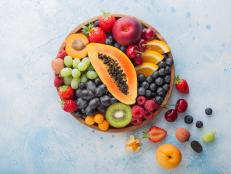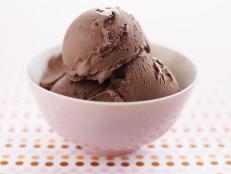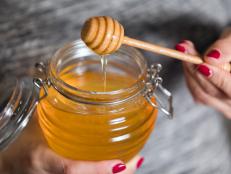Are Nuts or Seeds Healthier?
When it comes to salad toppers, butters or snacks, here's how the nutrition of nuts and seeds compare.

John Lawson, Belhaven/Getty
Seeds contain all the nutrients to nourish a brand new plant. Nuts are actually one type of seed that generally has a very hard shell. (The other two types of seeds are legumes and grains.) So, all nuts are seeds, but not all seeds are nuts.
Seeds are very rich in all the vitamins, minerals, healthy fats, and proteins needed a plant to emerge (if the seed weren’t eaten!) While these nutrients are all contained in nuts and seeds, you may have wondered which have the best nutrient profiles – and another important question, which is more sustainable?
Seeds Are High in Fiber and Protein
Seeds including nuts are associated with a host of health benefits. Researchers examining large population studies have found that people who eat more of both nuts and seeds tend to have a reduced risk of several types of cancers, heart disease, and diabetes. Both also contain fiber; soluble fiber is indigestible and slows down overall digestion helping fats and proteins to have satisfying staying power. And the insoluble fiber in both helps food move efficiently through the digestive tract, whisking up potential carcinogens as it goes.
Because seeds have to fight off diseases in order to survive and produce a plant, their seed coats contain protective plant phenols. When eaten these potent antioxidants may help retard the growth of certain cancers and help decrease inflammation.
Here are some high-fiber seeds. These seeds also contain at least 10 percent of the Daily Value for other important nutrients (per 1-ounce):
- Chia seeds: 10g fiber, calcium, iron, zinc, magnesium, omega-3, selenium
- Flaxseeds: 7.5g fiber, magnesium, omega-3, selenium
- Sesame seeds: 3.5g fiber, calcium, iron, zinc, magnesium
- Sunflower seed: 2.5g fiber, zinc, vitamin E, selenium, magnesium, folate, omega-6
Some seeds are surprisingly high in protein. Pumpkin, hemp, and watermelon seeds all have more protein than most nuts including almonds (6g per ounce) and (the legume) peanuts, plus they are chock-full of good nutrition.
These high-protein seeds also have at least 10 percent of the Daily Value of other nutrients (per 1 ounce):
- Pumpkin seed: 9g protein, iron, magnesium
- Hemp seed: 9g protein, iron, zinc, vitamin E, magnesium
- Watermelon seed: 8g, iron, magnesium
- Peanuts (a seed and legume): 7g protein, magnesium
Nuts Contain More Healthy Fat
Nuts are generally richer in healthy fats than most seed. Nuts contain healthful monounsaturated fats as well as polyunsaturated fats. Some nuts like walnuts even contain healthful omega-3 fats. In fact, nuts usually contain around 50 percent fat by (edible) weight, which is the richest source of fat in our diet after cooking oils. These healthy oils, along with fat-soluble antioxidants including vitamin E may be why eating nuts is so strongly associated with heart health and decreased inflammation in the body.
These nuts stand out as super-stars for healthy fats – both monounsaturated fats and polyunsaturated fat – along with at least 10 percent of the Daily Value of other important nutrients:
- Almond – 9g mono, 3.5g poly, magnesium, vitamin E
- Cashew – 8g mono, 2g poly, magnesium, zinc
- Brazil – 7g mono, 7g poly, magnesium, zinc, vitamin E, selenium
- Pecan – 12g mono, 6g poly, zinc
- Pistachio – 7g mono, 4g poly
- Walnuts – 2.5g mono, 13g poly, magnesium
- Hazelnuts – 13g mono, 2g poly, magnesium, vitamin E

GomezDavid/Getty Images
Which Is More Sustainable: Nuts or Seeds?
While you may have heard that some nuts (we’re looking at you pistachios and almonds) are very water-intensive crops, several strides in sustainability have been made. California almond growers have reduced the amount of water needed to grow each almond by 33 percent in the past two decades. And pistachio farms in California now plant trees which yield 30 percent more nuts, using the same amount of water as trees did three decades ago.
That said, when you compare overall water usage, seeds such as pumpkin seeds, watermelon seeds, and sunflower seeds generally use substantially less water than tree nuts. One study found that pumpkins and watermelons grow using only about 2 percent of the water used by nuts. Peanuts use about a third of the water used to grow cashews, and cashews are one of the lowest-water-usage nuts. As this 2021 study shows, eating healthy crop foods such as fruits, vegetables, nuts and seeds takes a lot more water than most of us realize.
Another consideration is where nuts and seeds grow. Shipping from overseas can cost more transportation resources than US-grown nuts and seeds. California has become the largest producer of almonds and walnuts. And even American hazelnuts, which are actually native to the Midwest, but have long imported, are now being grown with zero water after the established planting. Many seeds are also grown domestically. Sunflower seeds are grown in North and South Dakota. Pumpkin seeds are grown in Illinois. And flaxseed is are grown in Minnesota. Bottom line, research where your nuts and seeds are grown which is often on the package of most nuts.
Serena Ball, MS, RD is a registered dietitian nutritionist, food writer, and mom of five children. She blogs at TeaspoonOfSpice.com and is the author of the best-selling The 30-Minute Mediterranean Diet Cookbook and the newly released Easy Everyday Mediterranean Diet Cookbook. Follow her @TspCurry on Twitter and Instagram.
*This article was written and/or reviewed by an independent registered dietitian nutritionist.
Related Links:


































